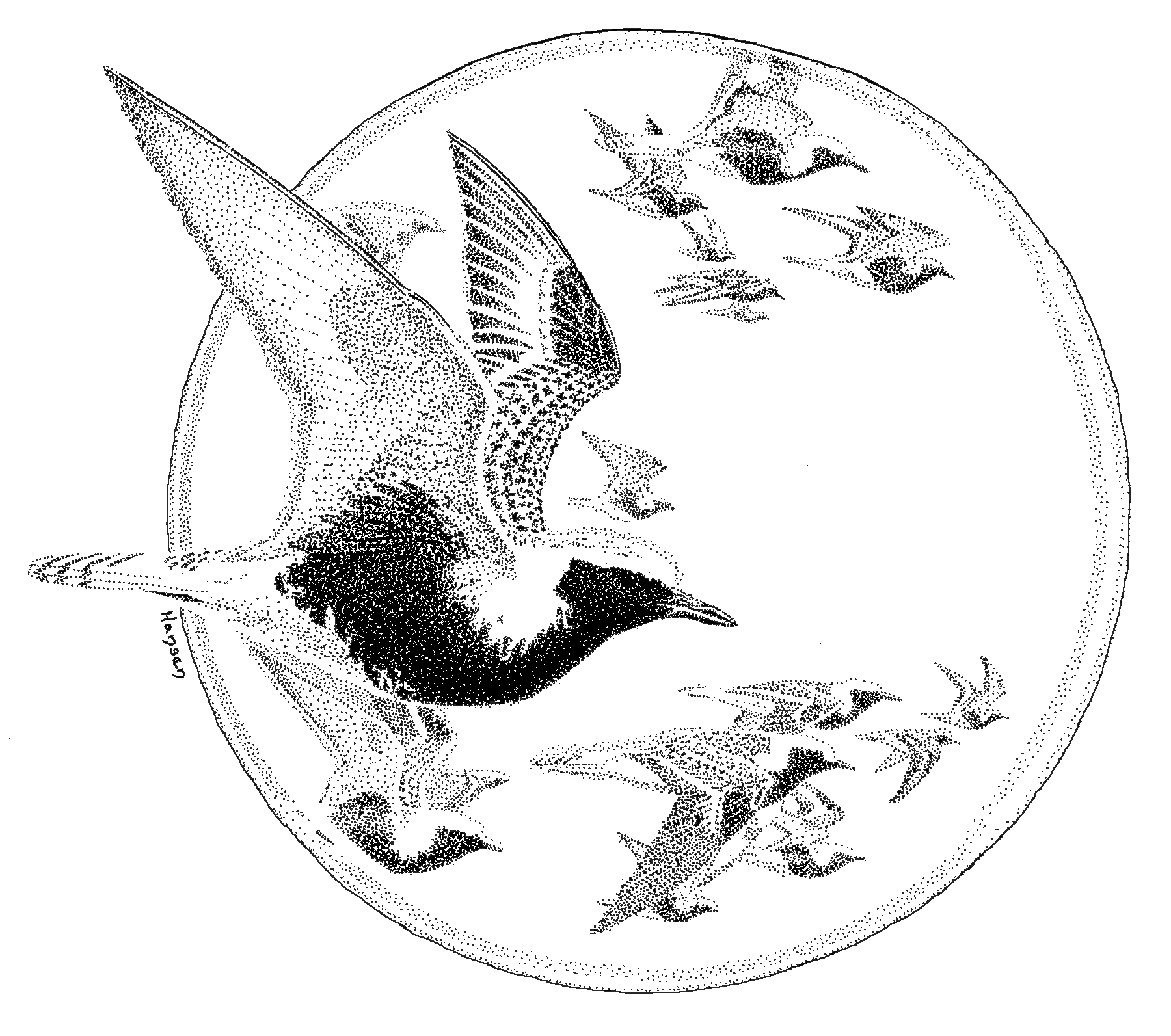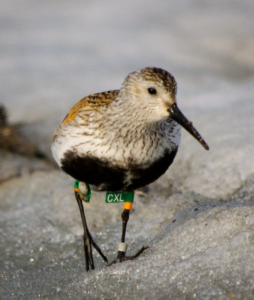The Pan American Shorebird Program (PASP) was created in the mid-1980s as a standardized method for marking and identifying individual shorebirds in the field and to facilitate identification of the origin of banding. Prior to the PASP, it was extremely difficult to identify who had banded a shorebird and in which country it had been banded. The program has led to increased reporting of marked birds to researchers; as such, the Pan American Shorebird Program has supported researchers to better understand shorebird movements and migration within the Western Hemisphere.
Incorporating consultation throughout the Western Hemisphere in 2013, an ad hoc Pan American Shorebird Program committee revised the shorebird marking protocol based on a regional assignment of new and previously-used colours for flags and bands, and on a specific set of field-readable characters for engraved colour flags. This allows for an adaptive one-flag system to be used across the Western Hemisphere. Smaller countries are grouped together into regions and share one regional colour flag while having the option to use a specific colour band to represent the country within the region.
The 2016 PASP shorebird marking protocol is intended to be a flexible framework for coordination of shorebird marking throughout the Western Hemisphere, where regions determine the best way to ensure that codes are not duplicated within their region. It is a reflection of the current situation with regards to marking shorebirds and thus is subject to revision when necessary. Below is the protocol in French and English, in addition to information on how to report color-banded shorebirds in Spanish, French, and English.
Observations de Limicoles avec des Bagues ou Drapeaux
La Observación de Aves Playeras con Anillos o Banderas
Observing Shorebirds with Bands or Flags
Shorebird Marking Protocol (English) – April 2016
Protocole de Marquage des Limicoles (Français) – Avril 2016


